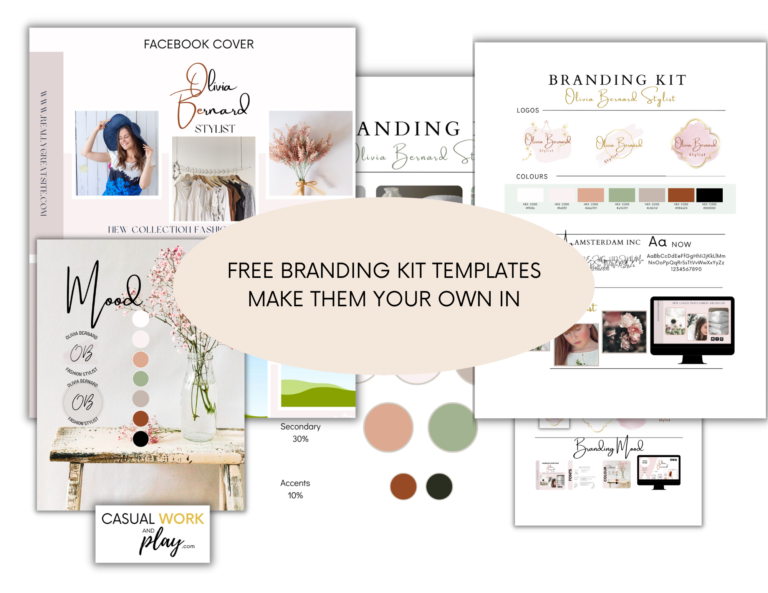What is a Branding Kit
Brand kits are one of the most exciting stages of a marketing plan. In its simplest form, a brand kit is a collection of all the visual assets needed to represent your brand.
The kit includes a logo, colour palette, and font styling. But beyond that, it’s also a tool for creating consistency and building trust with your audience. When everything is cohesive and on-brand, it sends a clear message that you’re serious about what you do. So if you’re looking to take your business to the next level, it’s time to create your brand kit!
Exactly why is a branding kit necessary?
A branding kit can increase the success of an organization’s marketing activities in three ways:
#1. Identifying and Communicating the Brand
An organization’s visual solid brand identity helps with awareness and interaction between the organization and the public. To have a strong brand identity, you must utilize branding kits and ensure that your target audience is aware of this identity. Consider the company’s mission, goals, and audience’s values. By having an identity representing their goals and values, brands provide their audiences with messages and information that the consumers can take in.
#2. Building Brand Awareness
Organizations can create brand recognition by considering the different aspects of their brand identity. For example, targeting audiences properly requires knowledge of the essence the company wants to portray through colours, logos, slogans, fonts, and products. By having a branding kit that encompasses all of these different aspects of the brand, an organization can create a cohesive brand identity to build brand awareness. Creating branding kits that are both apparent and unforgettable is a compelling way for organizations to make the most of their marketing budgets.
#3. Establishing a Connection with Your Audience is Important
An effective branding kit can help you build a strong connection with your target audience to feel like they are part of your organization. By creating an instant feeling of relationship or interest, effective branding kits help organizations detect the awareness of their target audience. If you understand your target audience, you can design branding kit elements that are visually attractive and relatable to the people you want to reach. When you better comprehend how your target audience thinks and feels, creating branding that resonates with them becomes more straightforward.
A Guide to Creating a Branding Kit
Use this guide to create your branding kit.
#1. Choose Your Branding Kit Colour Pallet
May I suggest using colours related to your organization’s purpose? Find appealing colours and also relate to the purpose of your organization. To do this effectively, you should research the meaning of different colours and how they can provide additional messages to different audiences. You can experiment with the colour wheel from Canva to see what other colours might work for your brand: https://www.canva.com/colors/color-wheel/
#2. Create a logo for your business
Using the colours in your branding kit, create a logo icon. When doing so, it’s beneficial to ensure the clarity and relevance of the logo. It’s also important to consider the logo’s colour about the colours of the branding kit.
#3. Select Text Style and Fonts
When setting up the text style and fonts, evaluating whether you want to use serif or sans serif fonts is essential. Each of these fonts has different benefits and increases clarity for other mediums.
Free Editable Branding kit Templates in Canva
Please note:
You will need a Canva account to access the editable templates. You can register here for free: Canva
These Brand Identity Kit templates are just there as starting points: you can then customize them to your liking! So you can begin building a personalized identity that people won’t be able to resist! You have total control over colours/fonts because this platform allows for an infinite amount of customization. Options – no matter how creative or sophisticated looking it may seem at first glance (in fact, if anything seems too complicated, they’ve got some cool features that make designing easier). Plus, professionals create the buttons that give off just enough ‘coolness’ without being too distracting from their message: “I’m confident.”

